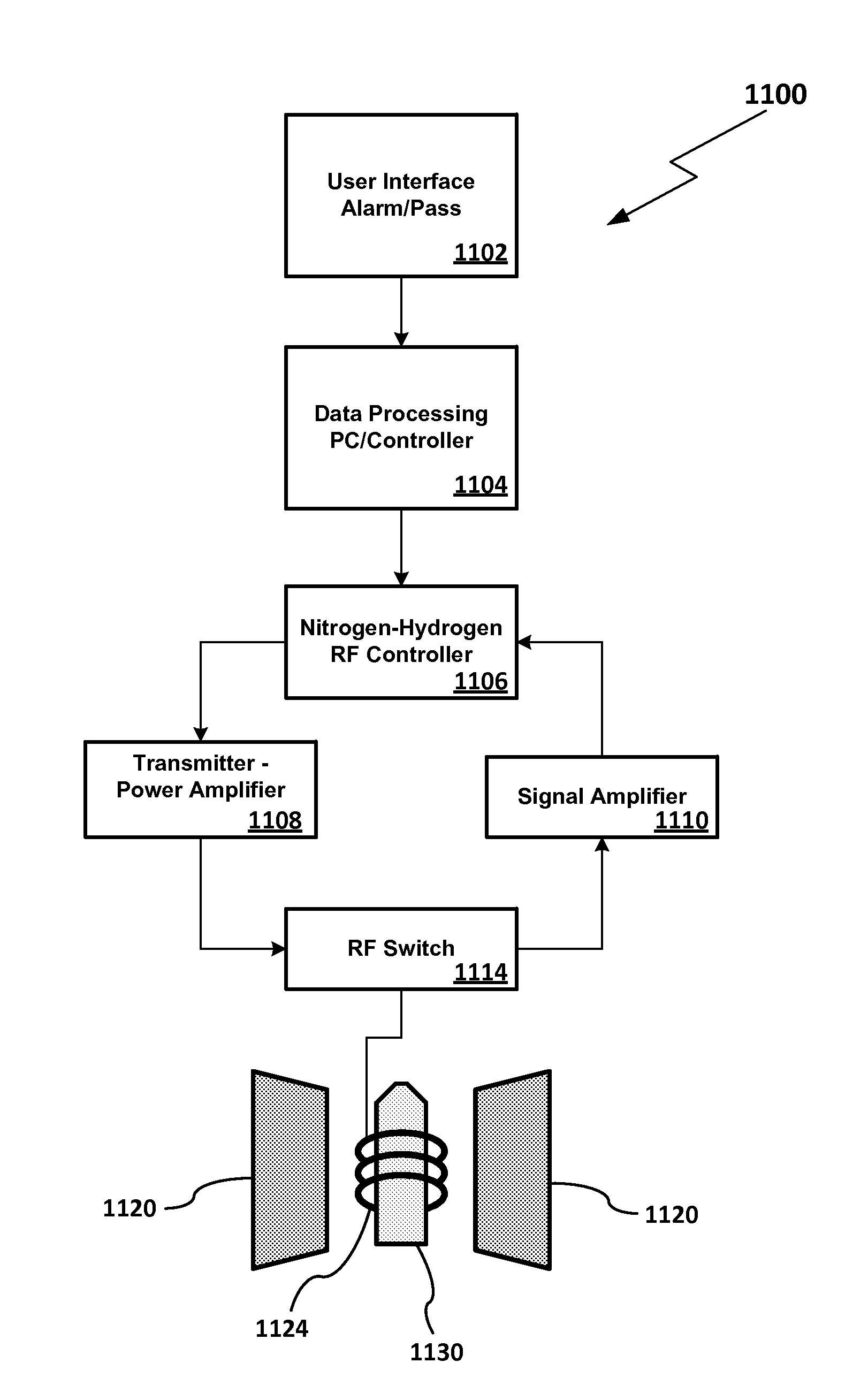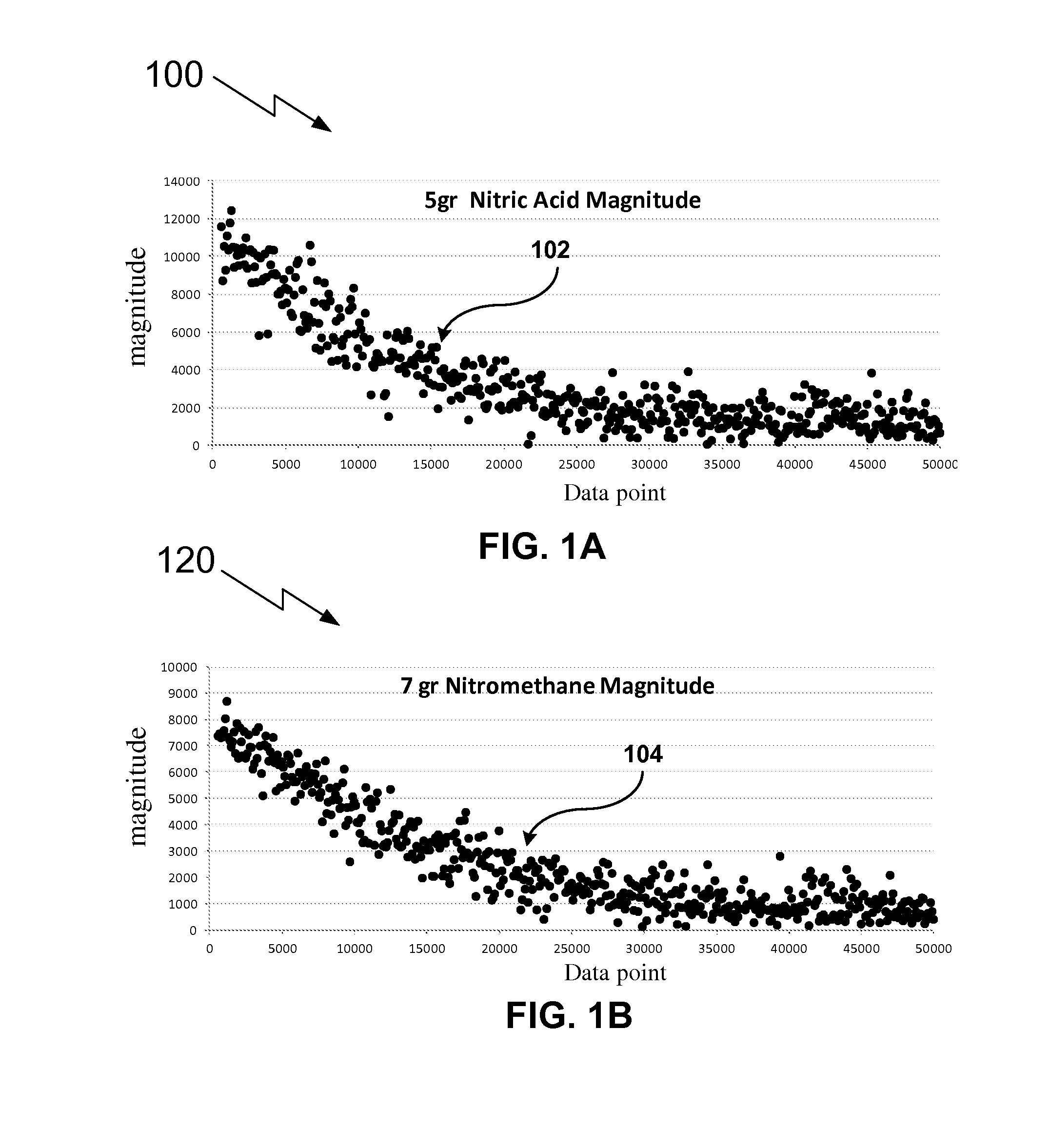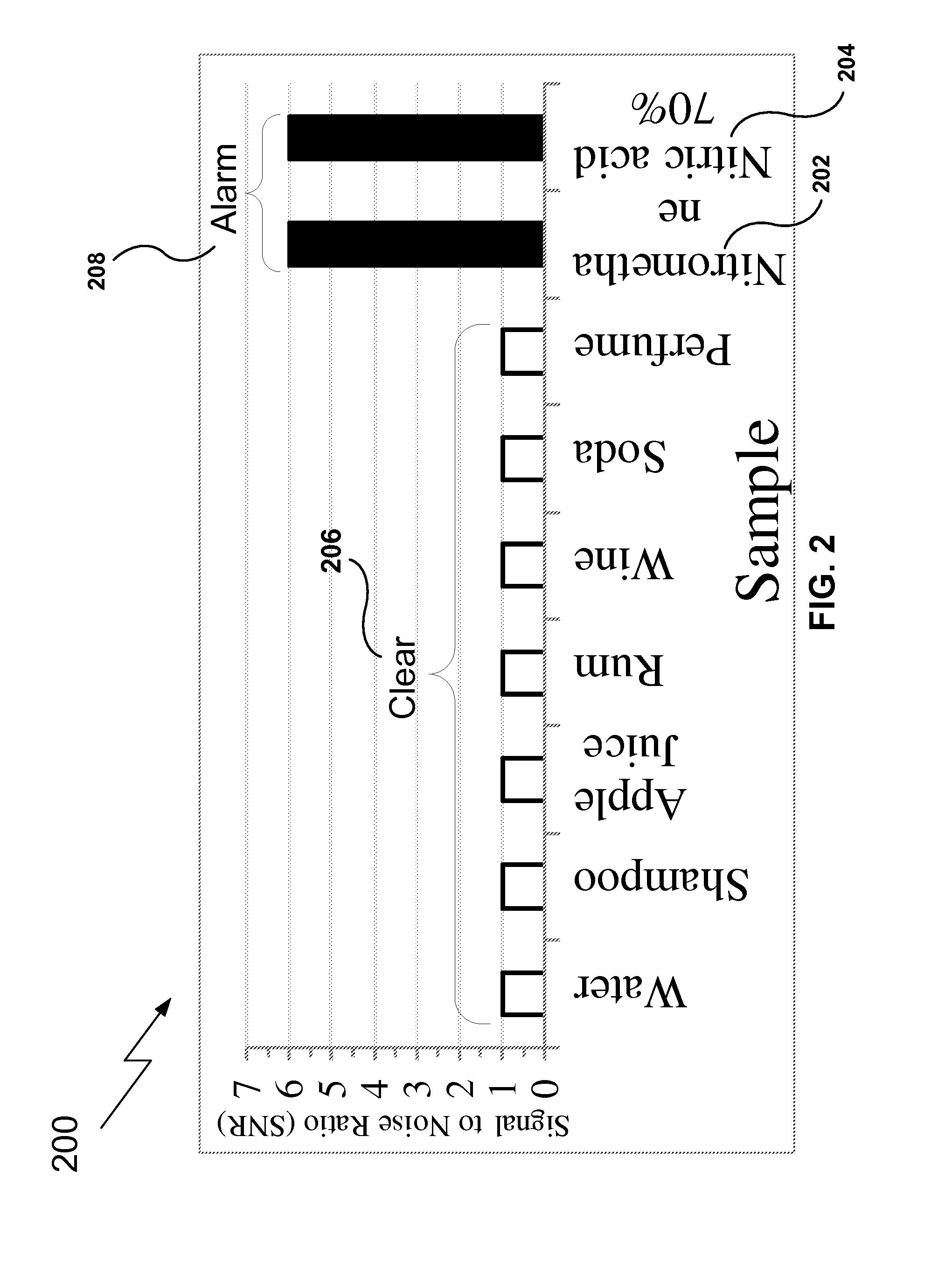Detecting hazardous materials in containers utilizing nuclear magnetic resonance based measurements
a technology of nuclear magnetic resonance and hazardous materials, applied in the field of nuclear magnetic resonance technology, can solve the problems of increased threat of terrorist attacks involving explosives, including improvised explosive devices (ieds), spontaneous ignition or combustion, and is more difficult to detect with vapor and trace detectors
- Summary
- Abstract
- Description
- Claims
- Application Information
AI Technical Summary
Benefits of technology
Problems solved by technology
Method used
Image
Examples
Embodiment Construction
[0032]It is to be understood that the following description of various implementations is given only for the purpose of illustration and is not to be taken in a limiting sense. The partitioning of in the function blocks, modules or units shown in the drawings is not to be construed as indicating that these function blocks, modules or units are necessarily implemented as physically separate units. Functional blocks, modules or units shown or described may be implemented as separate units, circuits, chips, functions, modules, or circuit elements. One or more functional blocks or units may also be implemented in a common circuit, chip, circuit element or unit.
[0033]A method of detecting hazardous materials is disclosed. The hazardous materials may, for example, be of the type utilized as liquid explosives, or as components or precursors of liquid explosives. The method of detecting hazardous materials combines inspection schemes to determine the presence of the element nitrogen and ex...
PUM
| Property | Measurement | Unit |
|---|---|---|
| natural abundance | aaaaa | aaaaa |
| resonance frequency | aaaaa | aaaaa |
| dwell time | aaaaa | aaaaa |
Abstract
Description
Claims
Application Information
 Login to View More
Login to View More - R&D
- Intellectual Property
- Life Sciences
- Materials
- Tech Scout
- Unparalleled Data Quality
- Higher Quality Content
- 60% Fewer Hallucinations
Browse by: Latest US Patents, China's latest patents, Technical Efficacy Thesaurus, Application Domain, Technology Topic, Popular Technical Reports.
© 2025 PatSnap. All rights reserved.Legal|Privacy policy|Modern Slavery Act Transparency Statement|Sitemap|About US| Contact US: help@patsnap.com



